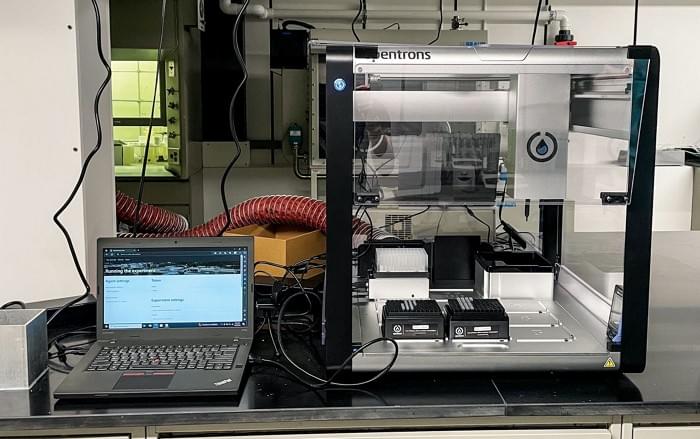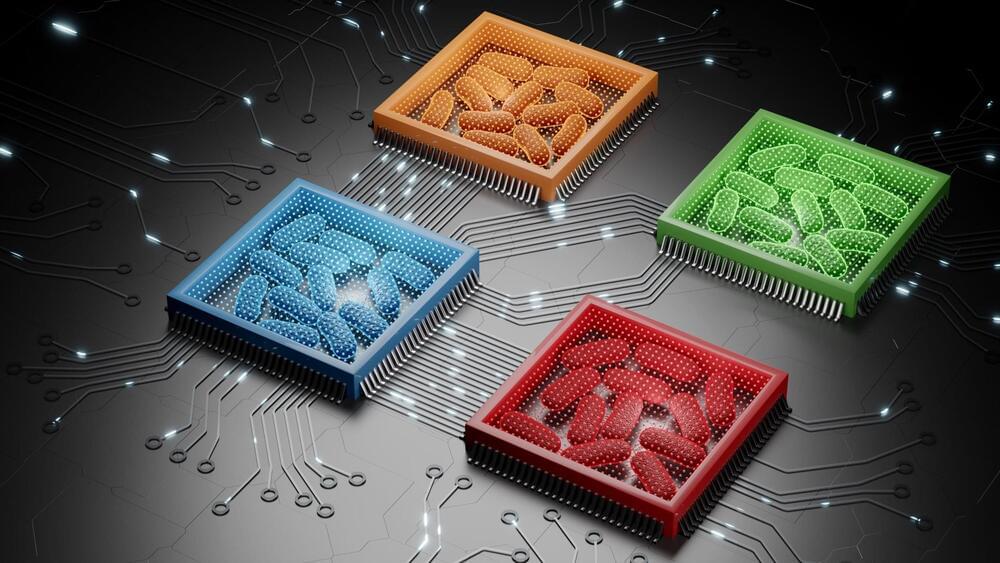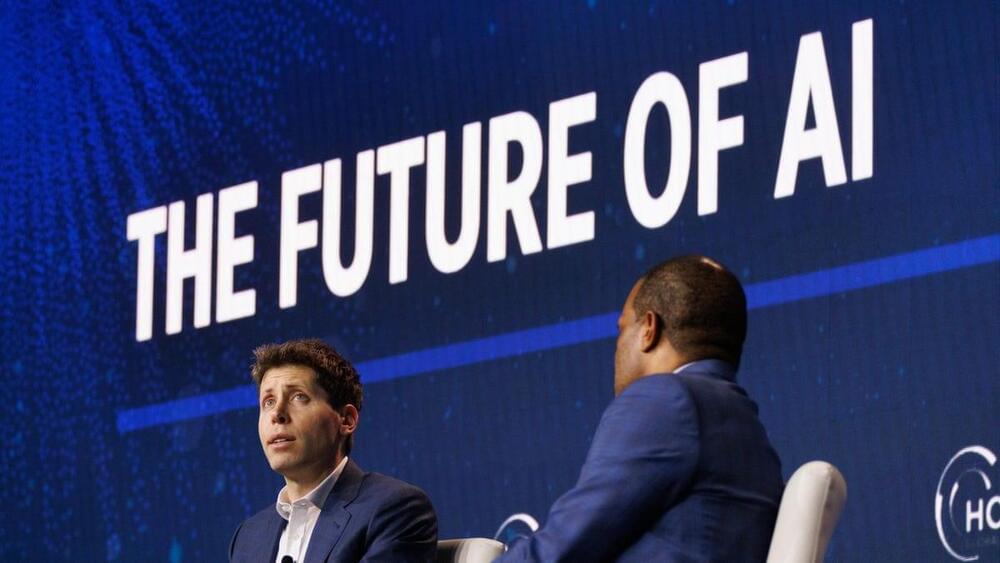Computational Chemistry.
AI chemist performs complex experiments based on plain text prompts.
On its first try, the technology could successfully replicate work that won a Nobel prize.

The survival strategies employed by one of the most aggressive, territorial and venomous ant species may pave the way to revolutionize robotics, medicine and engineering.
Fire ants survive floods by temporarily interlinking their legs to create a raft-like structure, allowing them to float collectively to safety as a unified colony and then releasing to resume their individual forms.
Drawing inspiration from this natural process, researchers at Texas A&M University discovered a method that allows synthetic materials to mimic the ants’ autonomous assembly, reconfiguration and disassembly in response to environmental changes such as heat, light or solvents.

Machine learning and laboratory experiments have provided scientists with insights into the different languages bacteria use to communicate. By understanding the ways in which bacteria interact and the circumstances under which their communication is disrupted, researchers can tackle issues related to drug-resistant bacteria and advance the development of biocomputing technologies.
The study builds on an earlier project in which the researchers showed that disrupting bacterial communication is an effective way to fight multidrug-resistant bacteria. Bacteria use small molecules to communicate with each other and coordinate infection, and the team showed that interfering with bacterial communication by blocking these molecules reduced inflammation and made the bacteria more vulnerable to antibiotics.

Super Humanity — This documentary examines breakthroughs in neuroscience and technology. Imagine a future where the human brain and artificial intelligence connect.
Super Humanity (2019)
Director: Ruth Chao.
Writers: Ruth Chao, Paula Cons, Alphonse de la Puente.
Genre: Documentary, Sci-Fi.
Country: Portugal, Spain.
Language: English.
Release Date: December 27, 2019 (Spain)
Also Known As (AKA):
(original title) O Futuro da Mente.
El futuro de la mente.
Netherlands O Futuro da Mente.
Poland O Futuro da Mente.
Portugal O Futuro da Mente.
South Korea O Futuro da Mente.
Spain El futuro de la mente.
United States Mind Forward.
SUPPORT US!
✘ Membership — https://bit.ly/3q5XPBh.
MORE DOCS!
► Gold: https://bit.ly/2IRZ0OA
► World Economy: https://bit.ly/36QlhEM
► All Playlists: https://bit.ly/3lOiCll.
#finance #documentaries #economy.

Without question, the biggest bottleneck in artificial intelligence and for a lot of HPC workloads today is bandwidth. Bandwidth at the network level; bandwidth at the socket level; bandwidth at the compute and memory level. No matter how many teraflops one single chip can push at high precision, once your workload scales beyond a single accelerator, node, or rack, bandwidth quickly becomes the limiting factor.
We have seen chipmakers grapple with this on a number of levels, by packing more high-bandwidth memory onto their chips, boosting interconnect speeds, and by using chiplets to push beyond reticle limits. Intel’s “Ponte Vecchio” Max Series GPU and AMD’s recently announced “Antares” Instinct MI300X GPU are prime examples of the latter. Driving data between chiplets does introduce I/O bottlenecks in its own right, but we can’t exactly make the dies any bigger.
Aside from needing a socket that is bigger than the reticle limit of lithography machines, we still need more capacity to satiate the demands of modern AI and HPC workloads. Over the past few years, we’ve seen a trend toward denser boxes, racks, and clusters. Cloud providers, hyperscalers, and GPU bit barns are now deploying clusters with tens of thousands of accelerators to keep up with demand for AI applications. It’s at this beach head that silicon photonics startup Lightmatter, now valued at more than $1 billion, believes it has the market cornered.

Building the future with AI.

Scientific knowledge can progress rapidly, yet its social, economic, and political impacts often unfold at a painstakingly slow pace. The medicine of the 21st century draws upon genetic and embryological breakthroughs of the 19th century. Our current technology is firmly grounded in quantum physics, which was formulated a century ago. And the topic of the day, artificial intelligence (AI), traces its origins to the secret weapons research during World War II.
In 1935, the brilliant British mathematician, Alan Turing, envisioned a conceptual computer. His genius would later lead him to crack the Enigma code used by German submarines for secret communications during the war. Turing’s contributions extended beyond cryptography, as he introduced fundamental concepts of AI, including the training of artificial neural networks. Benedict Cumberbatch portrayed Turing in the 2014 film The Imitation Game, which earned a screenplay Oscar that year. All this historical context brings us to the heart of the current AI revolution.
AI uses neural networks, also known as artificial neural networks, which are comprised of multiple layers of artificial neurons. Each neuron receives numerous inputs from the lower layer and produces a single output to the upper layer, similar to the dendrites and axon of natural neurons. As information progresses through each layer, it gradually becomes more abstract, resembling the process that occurs in the visual cortex of our brains.
Hackernews #1 @Rosebud_AI We’re building a platform to help users go from description to code to game. We aim to make game creation accessible to non-technical creators, so our UI provides explanations alongside the generated code.
Users have created a diverse range of games on Rosebud, including top-down RPGs, AI companions, and 3D obstacle courses, all within a few hours and sometimes minutes. Here are some examples you can play and clone (to start your own project).
* Anime Jester Companion: https://play.rosebud.ai/games/ba438cc4-246e-432e-b170-4e16948cd571 * Chat and Care for your Digital Puppy: https://play.rosebud.ai/games/f32a8159-7acf-4db6-a82c-70296f90bbf1 * Sphere Sync (3D game: align the sphere with the right color): https://play.rosebud.ai/games/96dfd5e1-62d4-47d8-a3e9-11038c8bb5cf * Basketball: https://play.rosebud.ai/games/a0e70622-e923-4517-8c1f-728dcf0db486 * Neon Waltz Generative Art: https://play.rosebud.ai/games/e32bd12b-7cc9-4f9a-b385-42ae0b096466 * Chat with Deku from My Hero Academia: https://play.rosebud.ai/games/716fd998-aab6-4185-8375-85d9eeb2adca
A simple way to think about Rosebud is ChatGPT + Midjourney + Replit. ChatGPT, because we give users a chat interface for this code editor so they can describe the game they want to make and generate game code; Midjourney, because we let users generate assets inside Rosebud, 2D and 3D, to be used in their games; And Replit, because Rosebud includes a browser based code editor that lets you deploy your game instantly.